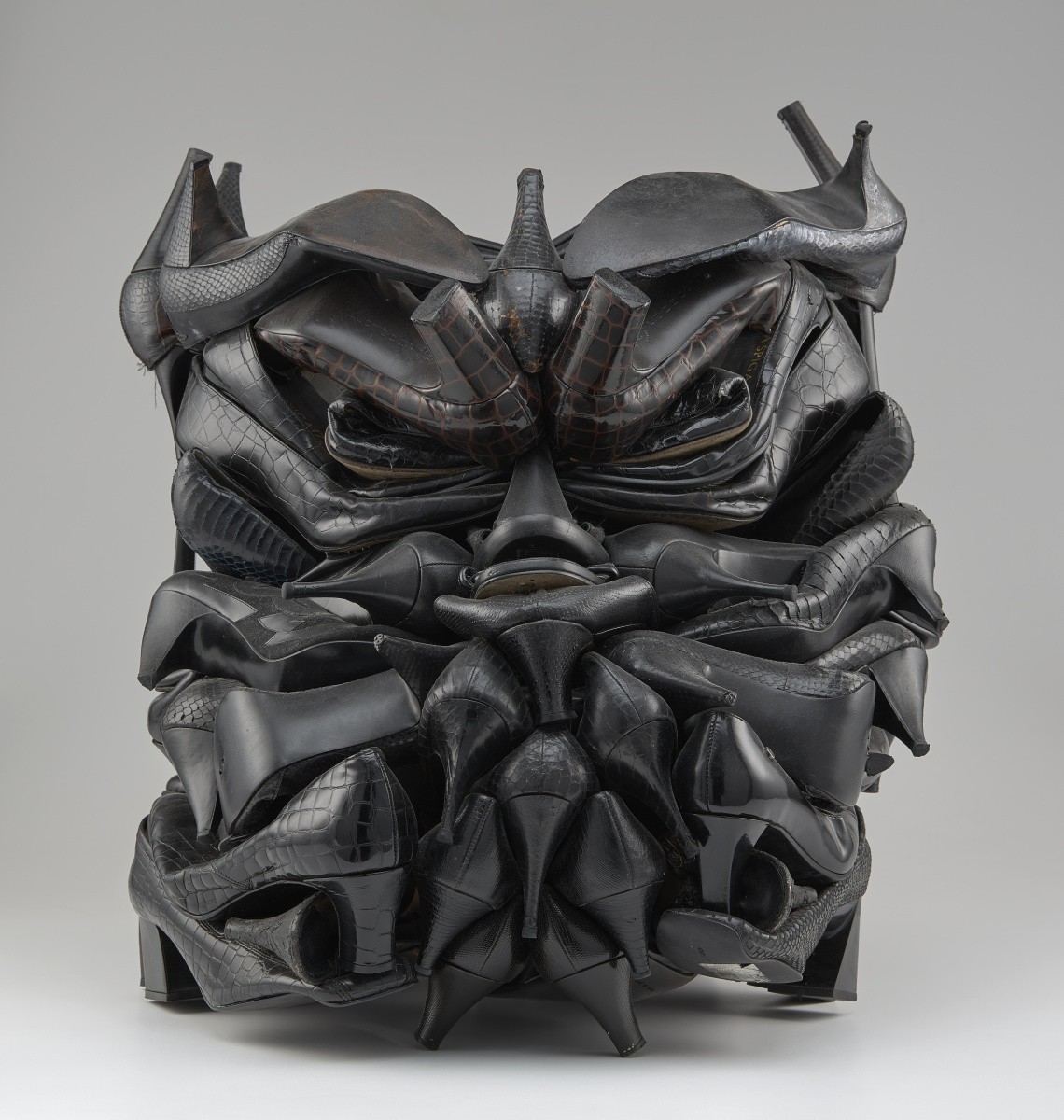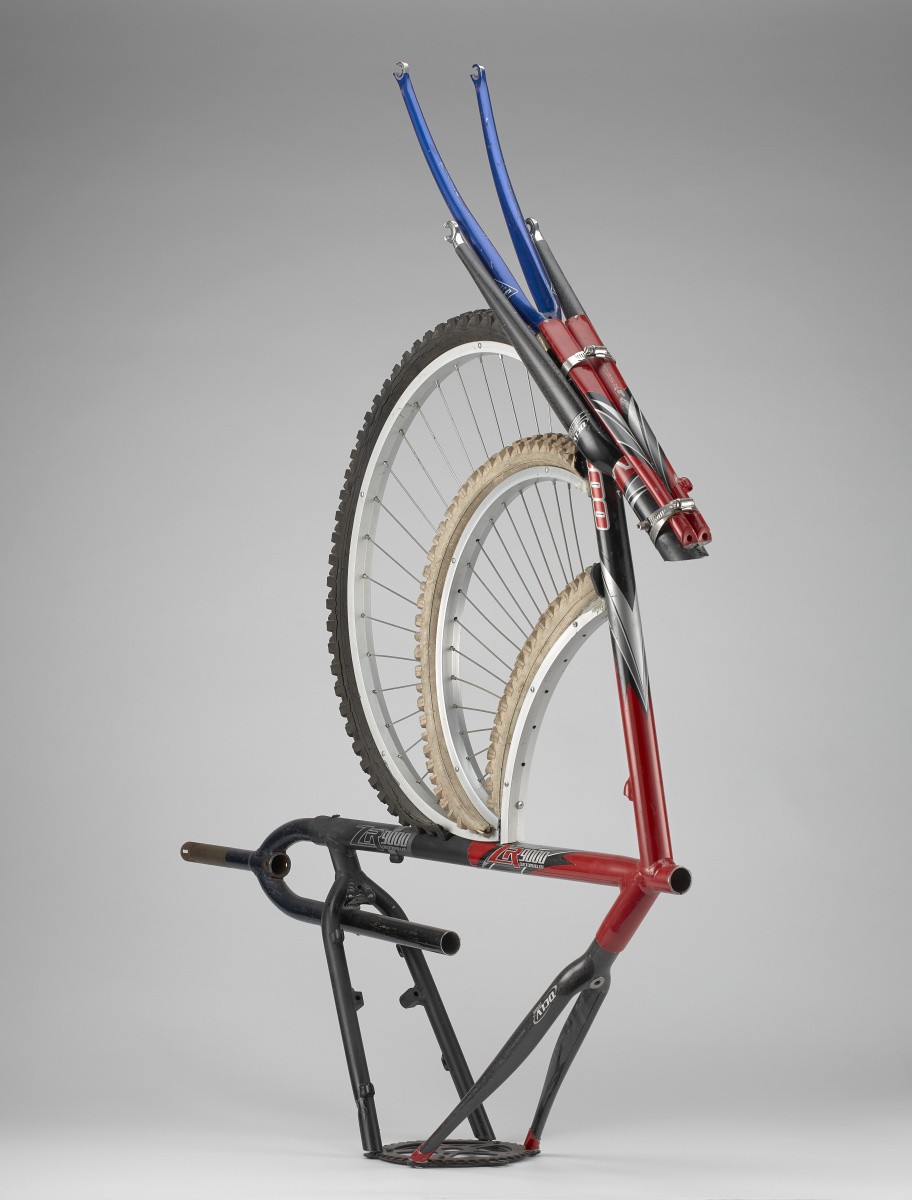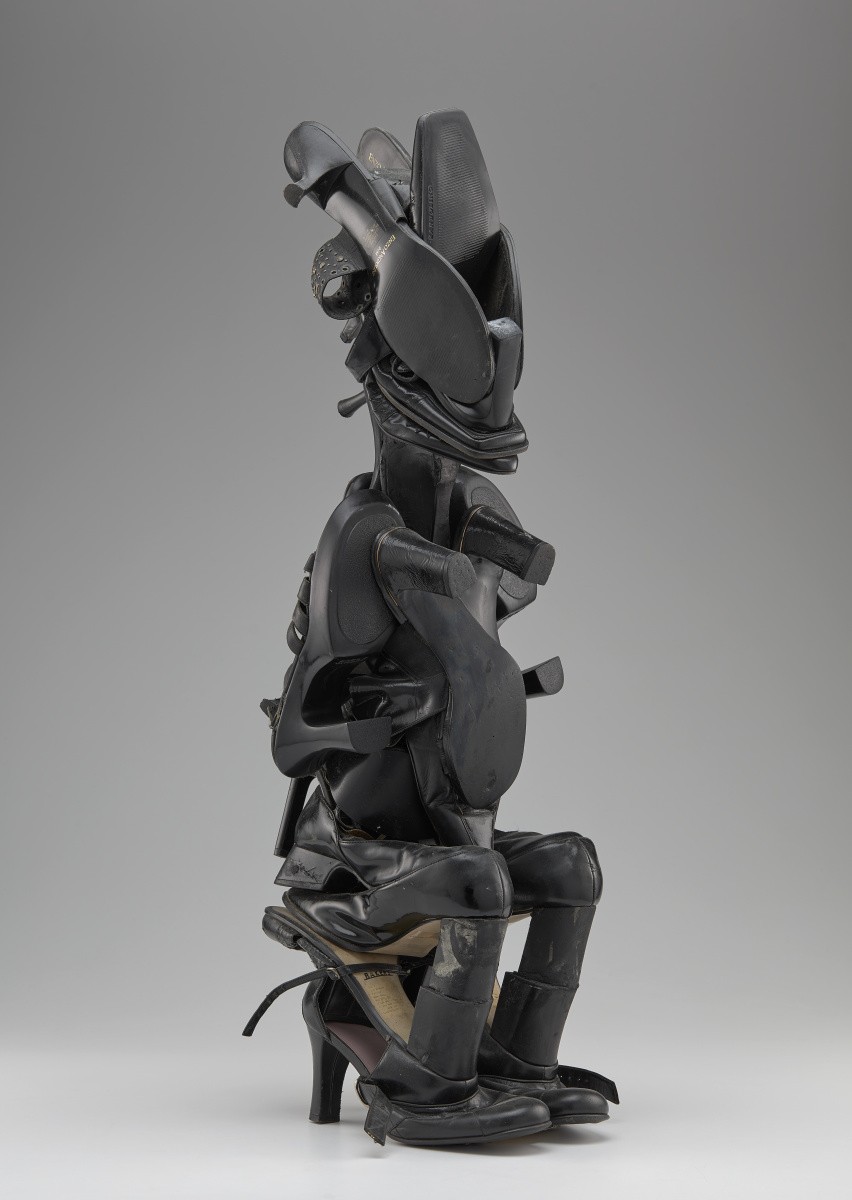Material perception and presence
Celebrated African-American artist Willie Cole’s expressive works make their way into the AGO Collection.

Willie Cole, Sole Reunion, 2008. Shoes, leather, plastics, rubber, metal, Overall: 55.9 x 53.3 x 58.4 cm. Purchased with the assistance of David and Yvonne Fleck, Miriam Rogers, the Ivey Foundation Fund, the Michael and Diane Hasley Fund and James Lahey and Pym Buitenhuis, 2008. © Willie Cole. 2008/47.
Describing himself as both an “archeological ethnographic Dadaist” and a “perceptional engineer”, African-American contemporary artist Willie Cole has been transforming everyday objects into art throughout his nearly 30-year career. He has exhibited his work extensively since the 1980s, gaining widespread recognition. His work can be found in both private and public collections, including at the AGO where three of his works were acquired in 2008.
From the 1970s and into the '80s, Cole wove through other media like theatre, writing, graphic design and illustration before eventually transitioning to his most recognizable visual language that ranges from sculptures, assemblages, installation, prints and public art. Often repurposing discarded materials that evoke human presence and intimacy—such as the implied connotations of a household iron and its practical uses—Cole’s work teeters between playfulness and reverence towards African iconography and the history of the African Diaspora. He often refers to his practice as “making things look African out of American-made objects”, implying a deliberate re-coding of mass-produced goods to highlight the ancestral lineage within African-American identity. He takes on the role of an archeologist, discovering “ancient relics”, and then formulates the meaning and historical context behind them. Cole has referred to the spirituality behind his approach, as he draws out the “life force” within each of the objects he finds.
Cole was born in 1955 in New Jersey with familial roots extending into Georgia. He spent his childhood surrounded by the women in his family, many of whom were domestic workers (occupations historically relegated to Black women in the African Diaspora). His steam iron and ironing board works draw from this personal history, alluding to notions rooted in domesticity and “women’s work” within the African-American community. Some of his steam iron and ironing board works, however, pointedly reference the Atlantic slave trade. His series of flattened ironing board prints, Beauties, does both; striking a haunting visual similarity to the infamous engraving of the British slave ship Brooks. Each print is named after the women he grew up with.
Production of his assemblages, specifically those made with shoes, didn’t become fully realized until roughly the mid-2000s (although he had been developing similar works in the 1990s). He has since developed an ongoing series of assemblages that resemble African tribal masks, Senufo-inspired sculptures, chairs and flowers. Stacked, rearranged and affixed together with intention, Cole routinely uses women’s shoes because of their angularity and colour range. In 2008, he visited the AGO’s African Art Collection and the AGO commissioned him to create three new works in response to it: Mother and Child (2008), Sole Reunion (2008) and Work Animal (2008). The first two are made primarily of shoes and the latter from an assortment of bicycle parts.
In February 2021, Cole’s relationship with the AGO extended into the Virtual School Programs. Mother and Child (2008) was featured as part of AGO Schools: Celebrating Black Creatives programming with spoken word artist and musician I.M.F and Rafiki. Elementary students were prompted to consider how objects can be redefined and take on new meaning. Mother and Child (2008) mimics the appearance of traditional African sculptures with a seated mother figure and a child on her back.
His range of commissioned work has recently entered the fashion world as well. Cole collaborated with celebrated fashion designer Rei Kawakubo for Comme des Garçons’ Homme Plus Fall/Winter 2021 Menswear collection to create headpieces made from black pumps. This collaboration is perhaps the most mainstream in Cole’s career, exposing his work to an entirely new audience. Using the Black Lives Matter (BLM) movement as a springboard in the summer of 2020, Cole began making T-shirts with “Black Art Matters” emblazoned across the chest to highlight the contributions Black people have made to the arts.


